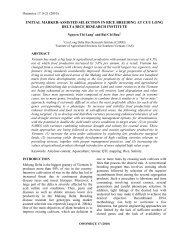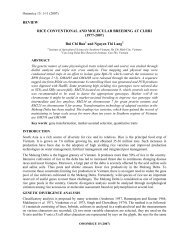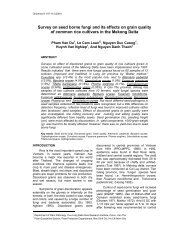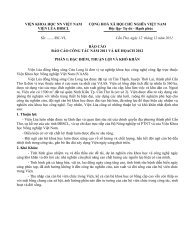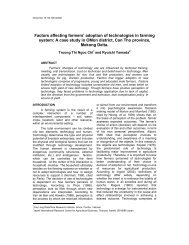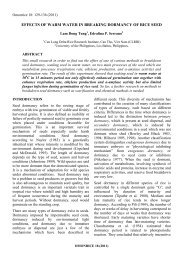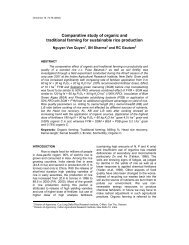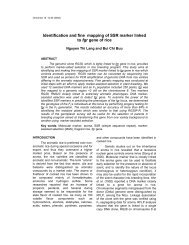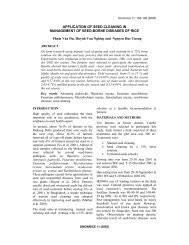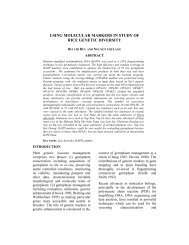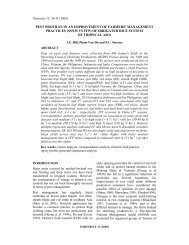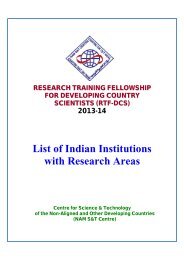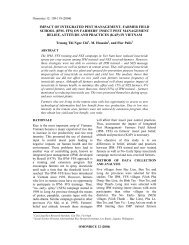BIOCONVERSION OF PADDY STRAW AND BIOFERTILIZER FOR ...
BIOCONVERSION OF PADDY STRAW AND BIOFERTILIZER FOR ...
BIOCONVERSION OF PADDY STRAW AND BIOFERTILIZER FOR ...
You also want an ePaper? Increase the reach of your titles
YUMPU automatically turns print PDFs into web optimized ePapers that Google loves.
62<br />
Tran Thi Ngoc Son et al.<br />
Fig. 1. Composting process of paddy straw in household<br />
a. Fungal inoculants Trichoderma sp.; b. Inoculation of Trichoderma sp. c. Watering; d. composted paddy straw<br />
Effect of paddy straw manure and biofertilizers<br />
on yield of crops at different seasons<br />
and locations:<br />
In 2006 Summer-Fall season: under<br />
recommended model, the average grain yield of<br />
rice obtained 3.77 to 4.63 T/ha. That was<br />
statistically significant difference as compared to<br />
farmers’ practice (3.43 to 3.71 T/ha) at 0.01 level<br />
in case of An Giang (T value = 4.84**) and Long<br />
An (T value = 3.86**) and at 0.05 level (T value =<br />
2.2*) in case of Can Tho. The increase in grain<br />
yield of rice due to recommended model was<br />
estimated about 9.91% to 14.28 % higher as<br />
compared to conventional practice of farmer<br />
(Fig.2)<br />
In 2006=07 Winter - Spring season: under<br />
recommended model, the average grain yield of<br />
rice obtained 4.44 to 8.18 T/ha. That was<br />
statistically significant difference as compared to<br />
farmers’ practice (3.79 to 4.91T/ha) at 0.01 level<br />
in case of An Giang (T value = 5.31**) and Long<br />
An (T value = 3.81**) and at 5% level in case of<br />
Can Tho (T value =2.34*). The increase in grain<br />
yield of rice due to recommended model was<br />
estimated about 17.15 to 35.43% (Fig.3)<br />
In 2007 Spring - Summer season:<br />
1. For soybean grain yield (at An Giang and Can<br />
Tho sites): yield from recommended model the<br />
gained from 1.77 to 2.50 T/ha, statistically<br />
significant difference as compared to farmers’<br />
practice (1.78 to 2.28 T/ha) at 1% level. T<br />
value is 2.91** in An Giang. There was no<br />
significant difference in in Can Tho (Fig. 4)<br />
2. For groundnut grain yield (at Long An site):<br />
yield from recommended practice gained 3.62<br />
T/ha, statistically significant difference as<br />
compared to farmers’ practice (3.03 T/ha) at<br />
1% level (T value = 9.13**). Grain yield of<br />
rice under recommended model was<br />
estimatedly increased 19.47 % (Fig. 4)<br />
OMONRICE 16 (2008)



